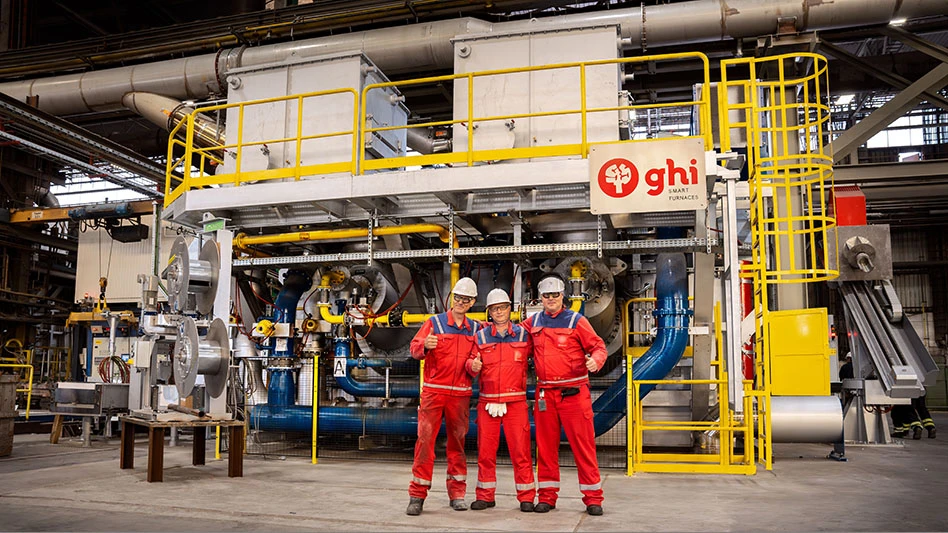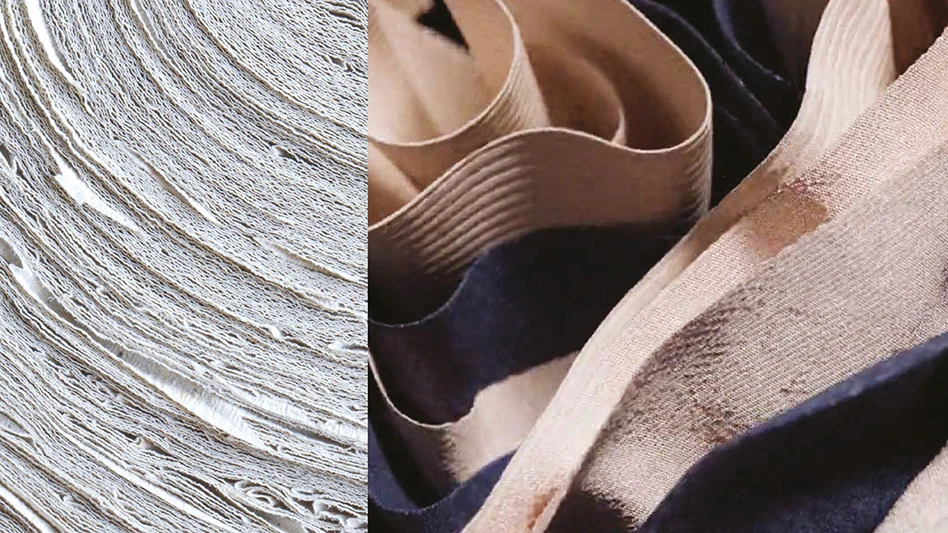Tight resin supplies point to worldwide shortage.
Tightening supplies of post-consumer high-density polyethylene have prompted Procter & Gamble, Cincinnati, to cut back on the amount of post-consumer material used in some of its containers.
Exactly which products were targeted for reductions was not disclosed at presstime.
P&G uses post-consumer resin plastics in a variety of products across many categories, including laundry detergent, cleaning products and beauty care products. Many of the company’s product lines are at 25- percent recycled content. Some are as high as 50-percent recycled content, such as detergent refill bottles.
"This step we’re taking right now is designed to bring our demand for post-consumer resin plastic in line with supply," according to T. Scott Stewart, spokesman for P&G. "The prices had dropped on post-consumer resin as early as 1994. The demand simply increased as a result of that phenomenon."
The move will require P&G to "manufacture new labels for our packaging that today disclose minimum levels of recycled content," says Stewart, "although this change will not affect our ability to meet minimum content requirements that are enforced in a few states."
Despite all the predictions of the demise of plastics recycling in recent years, demand for post-consumer resin "has gone way up," according to Tom Rattray, P&G’s associate director of environmental quality. "The increasing prices for virgin HDPE have pulled a lot of people into recycling. I’m told that the resin companies have stopped making off-spec. They tell me that they stop making off-spec when their utilization rate is really high, because they don’t need to. So the people who were in off-spec typically go to recycled material, because that’s the next cheapest stuff available. That’s about all they’re looking for -- cheap plastic."
Rattray says P&G’s resin suppliers have been "having fits" procuring sufficient amounts of post-consumer resin. "We started with the biggest supplier and gave them permission to drop down to lower levels of post-consumer resin. If we need to, if the supply doesn’t pick up, we’ll give more of them permission to do that. The understanding is that as soon as the supply picks up and they can get it without paying an absolute ransom, then they’ll go back up again."
In the broader picture, Rattray suggests that the plastics recycling infrastructure may already be approaching its natural limit for collection of plastic. He cites statistics from the American Plastics Council indicating that most municipalities are already collecting plastic in some form.
"Even if we were to beat the bushes hard, I don’t know that we could get an awful lot more," he says. "Unless we start going big time into schools or hospitals or cafeterias of large companies, the material coming out of your kitchen and my bathroom is probably not too far from what we should reasonably expect on the going basis."
INTERNATIONAL.
The shortage in supply is worldwide, says Rattray, noting reports of China importing huge quantities of mixed bales of post-consumer plastics. As always, however, China’s sporadic and somewhat clandestine activity in the international market is difficult to track."It has something to do with their cotton crop," says Rattray, who visited Formosa in December. "I couldn’t get any confirmation of it, but these reports keep showing up often enough for me to believe them. I think what they want is the PET to make fiber. One west Coast supplier said 60 percent of California’s bales are going to Asia."
While economic improvements in Europe make Europe’s industrial future more attractive, Rattray says reports from P&G’s international marketers indicate that China’s burgeoning economy will eventually be a force to be reckoned with.
"Things are happening there already," he says. "It’s gradual. It isn’t going to be like the tearing down of the Berlin Wall. It’s more Western investment, more joint partnerships, a faster rate of economy...We can’t make products fast enough in China. Our problem is hiring enough people to manage an explosive expansion."
Closer to home, Rattray doesn’t view the prevailing post-consumer resin shortage and the consequent need by P&G to cut back on recycled HDPE content as a setback necessarily. Other materials used to make consumer packaging are subject to similar cycles, he notes.
"We’ve had recycled fiber in our packages for years and years, and the fiber market has always been that way," he says. "When the supply is good and prices are low, you get cereal boxes that are 100-percent old newspapers. When it gets tight, then they have to put a tree in there once in a while."
That same flexibility should be allowed in the supply-content equation for plastic packaging as well, he maintains.
The need to cut back on post-consumer content was "very predictable," Stewart adds, not only for P&G, but for the packaging industry in general. "At certain junctions in the road, you’re going to hit this, and the market will react," he says. "And we certainly don’t believe that this is the way it’s going to be forever."
P&G continues to support the use of post-consumer resins in plastics packaging, Stewart adds. "We hope this situation is a temporary one, as market forces change to balance supply and demand, and we’re absolutely committed to maintaining and increasing our use of post-consumer resin plastics."

Explore the January 1995 Issue
Check out more from this issue and find your next story to read.
Latest from Recycling Today
- ReElement, Posco partner to develop rare earth, magnet supply chain
- Comau to take part in EU’s Reinforce project
- Sustainable packaging: How do we get there?
- ReMA accepts Lifetime Achievement nominations
- ExxonMobil will add to chemical recycling capacity
- ESAB unveils new cutting torch models
- Celsa UK assets sold to Czech investment fund
- EPA releases ‘National Strategy to Prevent Plastic Pollution’





